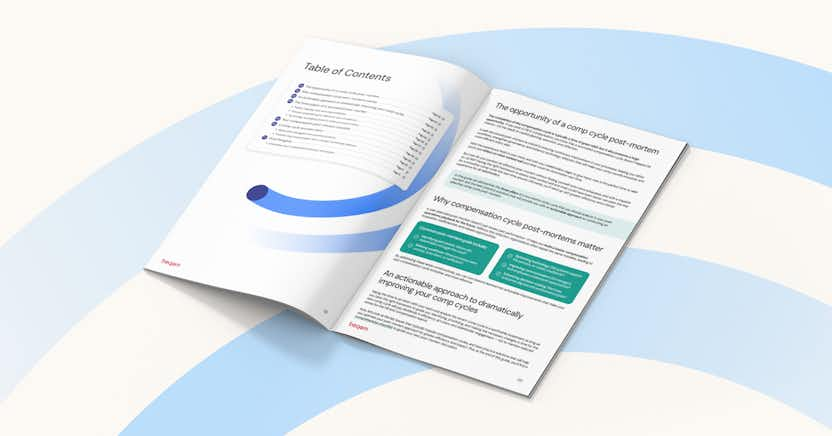What Is the Equal Pay Act
The Equal Pay Act (EPA) of 1963 is a foundational U.S. labor law that prohibits wage discrimination based on sex. It requires that men and women receive equal pay for performing substantially equal work in the same workplace. The EPA applies across compensation types—wages, bonuses, benefits, and more—and covers both public and private sector employers.
Why was the Equal Pay Act created?
Introduced as an amendment to the Fair Labor Standards Act, the EPA was designed to combat systemic wage disparities disadvantaging women in the workforce. By mandating equal pay for equal work, the law promotes fairness, strengthens the labor market, and reduces conflicts arising from compensation practices.
What are the core provisions of the Equal Pay Act?
The EPA defines key criteria for compliance:
- Equal work: Jobs must involve substantially equal skill, effort, and responsibility under similar working conditions.
- Compensation types: Includes salary, overtime, bonuses, stock options, benefits, and other financial rewards.
- Permissible pay differentials: Pay may vary if based on seniority, merit, quantity or quality of production, or other factors unrelated to sex.
What does the Equal Pay Act mean for employees?
For workers, the EPA safeguards economic fairness and career progression:
- Fair pay for equal effort: Employees doing the same job should be compensated equally, regardless of sex.
- Improved economic stability: Pay equity boosts financial well-being and long-term wealth-building potential.
- Stronger workplace trust: When compensation is transparent and unbiased, it fosters a culture of respect and engagement.
- Legal protections: Employees have the right to challenge unequal pay and seek redress through legal avenues, including back pay and damages.
How does the Equal Pay Act help employers?
Organizations that adhere to the EPA benefit in multiple ways:
- Attracting top talent: Transparent, equitable pay practices appeal to a broader talent pool.
- Reducing turnover: Fair pay helps retain skilled workers and avoids morale issues.
- Lowering legal and reputational risk: Proactive compliance reduces exposure to lawsuits and negative publicity.
- Supporting strategic performance: Fair compensation practices improve alignment between employee contributions and business objectives.
What happens if an employer violates the Equal Pay Act?
Failing to comply with the EPA can lead to:
- Litigation and legal liability: Affected employees can pursue legal action without prior EEOC involvement.
- Financial penalties: Employers may owe back pay, damages, attorney’s fees, and, in cases of willful violation, face an extended statute of limitations.
- Reputational harm: Public disclosure of discriminatory practices can damage employer brand and stakeholder trust.
- Operational disruptions: Noncompliance can result in internal conflict, turnover, and greater regulatory scrutiny.
How can employers ensure Equal Pay Act compliance?
Meeting the requirements of the EPA means building fair, structured pay systems:
- Conduct regular pay audits: Assess wage data by role and gender to identify pay disparities.
- Define and communicate compensation criteria: Use consistent guidelines for merit, tenure, and performance-based rewards, and communicate them clearly.
- Document pay decisions: Keep clear records explaining the rationale behind each compensation action.
- Train decision-makers: Educate HR and managers on equitable pay practices and legal obligations.
What is the difference between the Equal Pay Act and the Civil Rights Act?
While the EPA addresses sex-based wage discrimination, Title VII of the Civil Rights Act of 1964 prohibits discrimination in all employment practices—including hiring, promotions, and pay—based on race, color, religion, sex, or national origin. Both laws are enforced by the Equal Employment Opportunity Commission (EEOC).
What is the current state of the gender pay gap?
As of 2024, U.S. women working full-time earned approximately 85 cents for every dollar earned by men. Among women aged 25–34, the gap was narrower at 95 cents. However, the gap remains wider for women of color: Black women earned 66 cents and Hispanic women 58 cents compared to white, non-Hispanic men. These disparities highlight the ongoing importance of legal frameworks like the EPA.
What role do compensation systems play in EPA compliance?
Technology plays a critical role in implementing fair pay practices at scale. A SaaS-based compensation platform like beqom can support EPA compliance in several key ways:
- Centralized data management: Consolidates pay data across roles and regions for consistent analysis.
- Automated pay equity audits: Enables regular reviews of compensation by gender and other demographic factors.
- Standardized compensation structures: Helps organizations apply consistent rules for promotions, merit increases, and bonuses.
- Scenario modeling: Allows testing of compensation changes before implementation to avoid introducing inequities.
- Audit trails: Maintains defensible records of salary decisions, adjustments, and justifications.
How do you evaluate compliance with the Equal Pay Act?
Indicators of compliance include:
- Regular monitoring of pay equity metrics.
- Narrow or fully justified wage differences among employees in comparable roles.
- A system in place for responding to internal or external pay equity concerns.
What are best practices for maintaining Equal Pay Act compliance?
Organizations should adopt proactive strategies:
- Conduct annual compensation reviews using pay equity software.
- Apply structured compensation frameworks with defined salary bands.
- Document and justify pay decisions.
- Communicate openly with employees about compensation principles.
- Align pay practices with broader talent goals.
Frequently asked questions (FAQs) about the Equal Pay Act
- What qualifies as equal work?
Jobs requiring substantially equal skill, effort, and responsibility performed under similar conditions qualify as equal work. - Are any pay differences allowed?
Yes, if they are based on performance, experience, seniority, or other non-sex-based criteria. - Who enforces the EPA?
The Equal Employment Opportunity Commission (EEOC) is responsible for enforcement. - Can the EPA be enforced outside the United States?
No, the EPA is a U.S. law. However, many countries in Europe and beyond have similar equal pay legislation. - How does the EPA relate to pay transparency laws?
The EPA laid the groundwork for equal pay principles. Pay transparency laws expand on these by requiring disclosure of salary ranges and pay reporting. - Is equal pay considered a human right?
Yes. International labor frameworks—including the ILO’s Equal Remuneration Convention—recognize equal pay as a fundamental human right.
Summary
The Equal Pay Act of 1963 remains a cornerstone of workplace equity in the United States. It mandates equal compensation for equal work regardless of sex, helping to close the wage gap and promote a fairer economy. Organizations that invest in transparent, data-driven compensation systems are best positioned to meet both regulatory expectations and employee expectations around fairness and inclusion.






